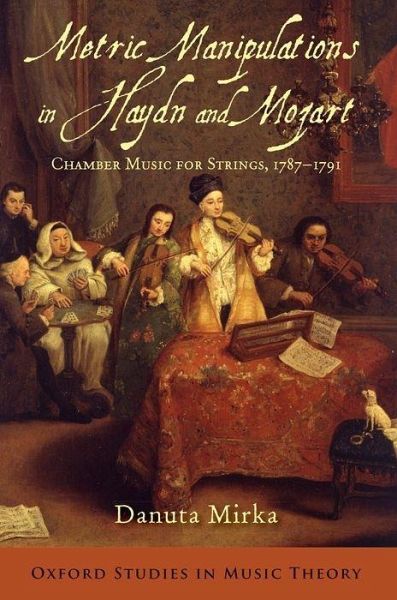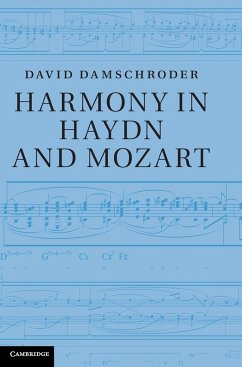
Metric Manipulations in Haydn and Mozart
Chamber Music for Strings, 1787-1791
Versandkostenfrei!
Versandfertig in 1-2 Wochen
54,99 €
inkl. MwSt.

PAYBACK Punkte
27 °P sammeln!
Metric Manipulations in Haydn and Mozart makes a significant contribution to music theory and to the growing conversation on metric perception and musical composition. Focusing on the chamber music of Haydn and Mozart produced during the years 1787 to 1791, the period of most intense metric experimentation in the output of both composers, author Danuta Mirka presents a systematic discussion of metric manipulations in music of the late 18th-century. By bringing together historical and present-day theoretical approaches to rhythm and meter on the basis of their shared cognitive orientations, the book places the ideas of 18th-century theorists such as Riepe, Sulzer, Kirnberger and Koch into dialogue with modern concepts in cognitive musicology, particularly those of Fred Lerdahl and Ray Jackendoff, David Temperley, and Justin London. In addition, the book puts considerations of subtle and complex meter found in 18th-century musical handbooks and lexicons into point-by-point contact with Harald Krebs's recent theory of metrical dissonance. The result is an innovative and illuminating reinterpretation of late 18th-century music and music perception which will have resonance in scholarship and in analytical teaching and practice. Metric Manipulations in Haydn and Mozart will appeal to students and scholars in music theory and cognition/perception, and will also have appeal to musicologists studying Haydn and Mozart.
Focusing on the period of most intense metric experimentation in the work of both Haydn and Mozart, author Danuta Mirka presents here a systematic discussion of the composers' metric strategies. Combining historical music theory with the cognitive study of music, Mirka's award-winning book sheds new light on this repertoire and redefines the role of meter and rhythm in Classical music.














